Oya (Yansa): Orisha of the wind in the Yoruba or Santeria religion

Oyá, deity of the Yoruba pantheon considered in Africa as "the divinity of the groves". On the other hand, both in Cuba and Nigeria, she is credited with power over storms and tornadoes that destroy everything in her path as a symbol of her furious character. Her power over the thunder that her lightning heralds shows that she is echoing the arrival of her husband. Shango, deity owner of lightning.
Who is Oya?
Oya is the deity related to the market and the cemetery, where we can find her at the door. She also lives in the atmosphere, in the essence of pure air that gives life to the beings of creation. In addition to being the Goddess of the winds, is attributed the power over breathing, the basic principle of life, but also, over hurricanes, changes in atmospheric pressure that stimulates the movements of air masses that move around the globe terrestrial; It intervenes in the condensation of the clouds, in pollination, and in the change of the climatic seasons.
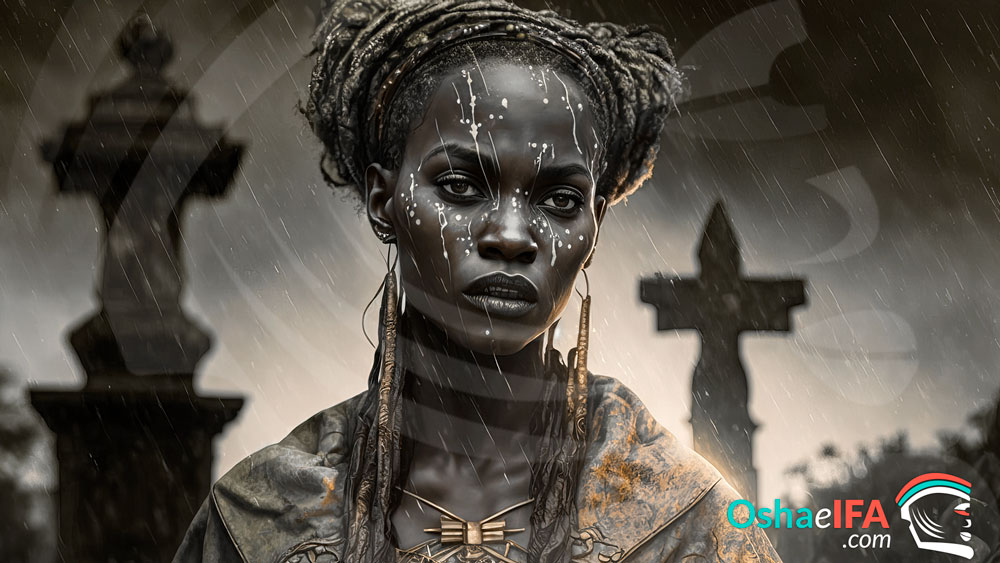
Within Afro-Cuban practices, it is believed that in his earthly journey his father was Oye and his mother was Afabile, which is a path of Obatalá. She identifies as Oshun's sister, with whom she has a close relationship, in fact, it is said: "there is no Oyá without Oshun, nor Oshun without Oyá»; she is also the sister of Yemaya, with whom they are mistakenly said to have a rivalry. And, she has another younger sister known as: Ayao.
His true love was Shango, who is believed to have had two children known as the Ibellis: whose names are Kaewo and Kainde. On the other hand, it is said that he had a relationship with Ogun and that he lived with Olokun, with whom she conceived a son named: Eshu Alaketu.
On the other hand, in Yoruba lands, there are various myths from the ancient oral tradition that describe the origin of the Oya birth, in which the image of Oya as a woman incarnated and deified for her merits within the community is usually mixed, and Oya's nature as Orisha or Ebora created directly by Olodumare.
Like Ebora, she is credited with participating in the company of the female Orishas, in the group of the Geledé, who are the ancestral mothers who, at the beginning of time, cooled the Earth so that it would be habitable. Regarding her transit through the Earth, the legends affirm that she only made one coming to this world. She was born in the Ira region, where she is called "Oya Onira" translated as: Ira's main head, being recognized as the owner of the Niger River.
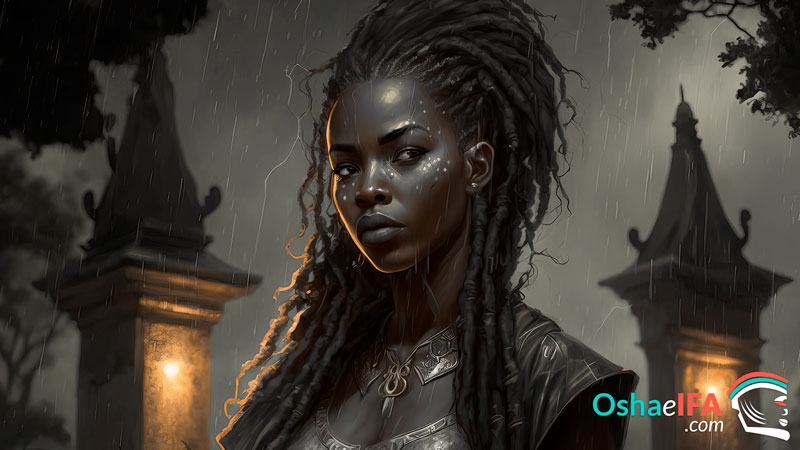
It is also known under the names of: Yanzan, Yanza, Iyansan, Iya mesa mesa or Okara Ini La Loyin. In the land of the fons the name is attributed to her: Avesán and in Dahomey she is called Adañe Kuruñé, whose meaning is: the courageous cadaveric.
For the Lucumí, Oya has always represented a strong and mysterious deity, who does not show his face easily. She is a warrior by nature, skilled in military arts, she handles the machete with great skill. She has a rather hot temper that does not tolerate faults. She also known as feicita, that is, as Olofin's secretary.
Characteristics of the Orisha Oya
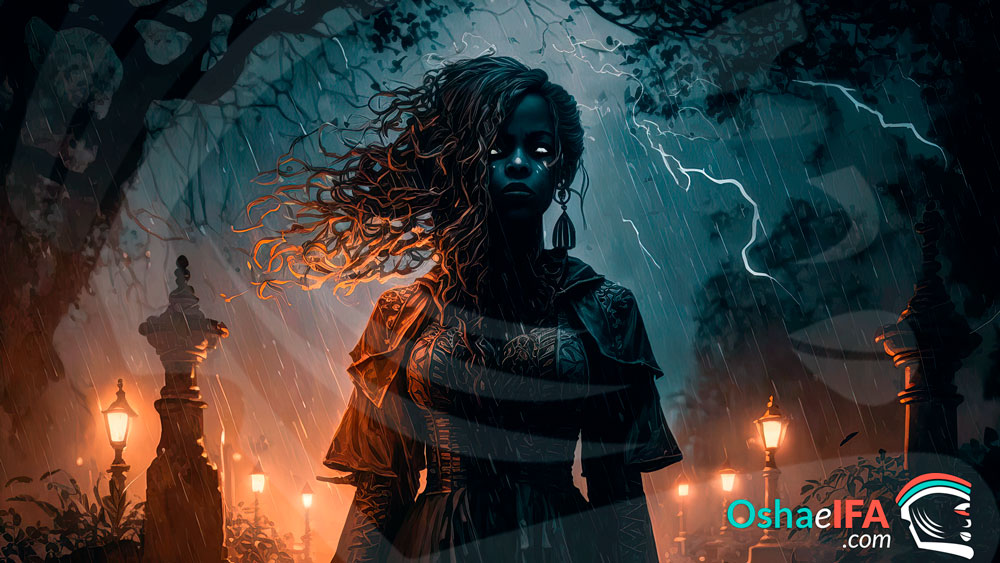
Oya is a strong and mysterious Orisa, who does not show her face easily. She is a warrior by nature, she is skilled in the arts of war and handles the machete with great skill. She has a rather hot temper that does not tolerate faults. She is a devoted wife and mother who, despite being stern at times, is willing to sacrifice whatever it takes to protect her children.
The function of Oyá is relevant within the Yoruba pantheon or in Santeria. She personifies the meaning of woman as such, beyond motherhood that Yemaya could symbolize, and beyond femininity, as Oshun could do. Oya is the presence and influence of women on Earth, the way they project themselves, the role they assume, the very existence of women, alongside men, as an individual who can do anything beyond gender, the demonstration of the absolute potential of women's abilities.
That is why Oya as a wife accompanied Shango, but was not limited to merely observing what he did. She actively participated in her activities, in the war, in the fight, in the confrontation, as her partner and her peer.
This is nothing more than the expression of its own nature. That courage that defines her goes hand in hand with her spiritual virtues, since, as a deity, Oya governs the various roles that individuals play on Earth, and in fact, she does so in a very benefactor way, so she is always willing to help all the people whose Ori is disturbed by fear, insecurity and lack of self-esteem. That is to say, that Oya helps her devotees to overcome fears, under the premise that she understands that they paralyze, reduce the capacity for action, induce the necessary changes to grow and evolve, and therefore neutralize the projection of the be.
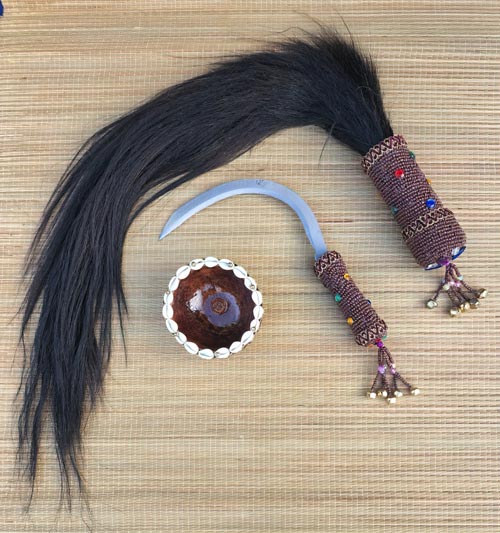
It might seem like one more detail about the attributions of the Orisha, but it is about much more than that, deeply analyzing the ancient beliefs of the Yorubas, Oya is a deity whose task is to contribute to the transformation of Ori, who is the « divinity” of the head, whose main function is related to destiny and the spiritual nature that dwells individually and uniquely within each being, that is, it is our own essence. This transformation contributes to transcendence, while awakening enlightenment, revitalizing our spirit and helping us connect appropriately and productively with our destiny and good fortune.
Tools
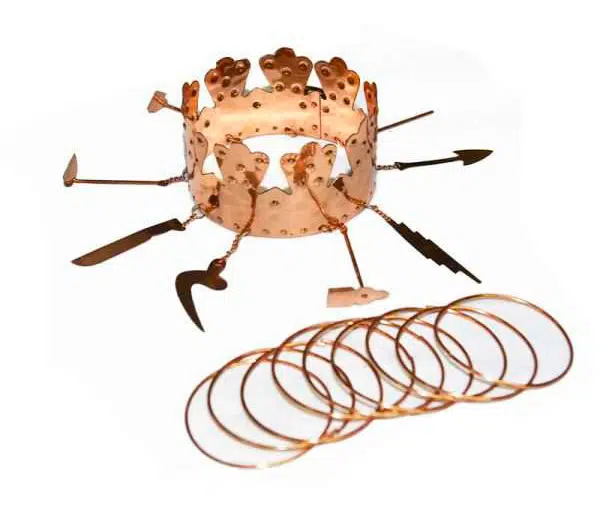
Among his attributes, he wears a copper-colored 9-pointed crown, from which his tools and weapons hang. Among his attributes, two buffalo horns, a machete and some metal implements in the form of a chisel or ax stand out. She owns the Copper. She is summoned by ringing a framboyan pod.
Odu Isalaye of Oya
Oya arrives or descends to earth through the Irosun Osá, accompanied by the Echu Olosun Sará.
Your day
The celebration in honor of Oya takes place on February 2, motivated by her syncretism with the Virgen de la Candelaria. His day of the week is Friday.
Oya colors

Although he likes the combination of 9 different colors, Oyá's favorite colors are brown or brown, in any of its shades, and in Africa it is related to green. His number is 9. Oya's necklaces They are made with carmelite beads with black and white spots.

Your dance
When he incorporates a saint's horse his dance is usually quite energetic. Normally, the face is covered with the hair forward (if the characteristics of the eggun allow it). He performs movements that simulate brandishing his machete or invoking the force of the wind by moving his iruke (ponytail). It is usually served with water and corojo oil, sometimes with a little honey.
oya number
The number that identifies Oya is 9. This digit at a spiritual level has a sacred character, it speaks of the capacities of extracorporeal perception in human beings, the possibility of feeling the energies that inhabit beings and elements of nature, it is say, that it is a very spiritual digit, just like Oya is.
On the other hand, the number 9 symbolizes empathy, universal love, inner light, experiences, emotions and above all intuition. In addition, it represents transcendence and elevation to a higher degree of consciousness, just as the Orisha does.
Regarding the Oracle of the diloggun, Oya speaks par excellence through the odu: Osa, which is number 9, and through the Oracle of Biague or Aditoto, that is, through the coconuts, speaks through the letter: Ocana and Oyekun.
Taboos
The temperament of this deity is quite delicate, therefore, it is important to avoid breaking his taboos and keep his blessings for the proper functioning of our affairs, therefore, it is important to take into account that he does not like sheep, melon, the dog, the oil from the almonds of the palm nuts, and does not accept that women manipulate their attributes when they are menstruating.
But, the most important taboo that Oya has is that under no circumstances does she eat abo, that is, she does not eat mutton. The spiritual meaning that the ram has for the Yoruba religion, according to the Odu of Ifá Ogbe Iwori, is that by sacrificing rams, the accreditation of titles, positions or leadership can be effectively attracted. It is estimated that, among all the animals existing in creation, the ram is the one that has the blood most similar to that of human beings. It is usually liked by many deities, with the exception of the Yanza. The explanation about the reason why this deity hates this animal can be varied.
In the Ifa lucumí literature it is established that Oya stopped eating that animal to save her children, the Ibeyis. This is how the odu of Ifa Osa kuleya tells it.
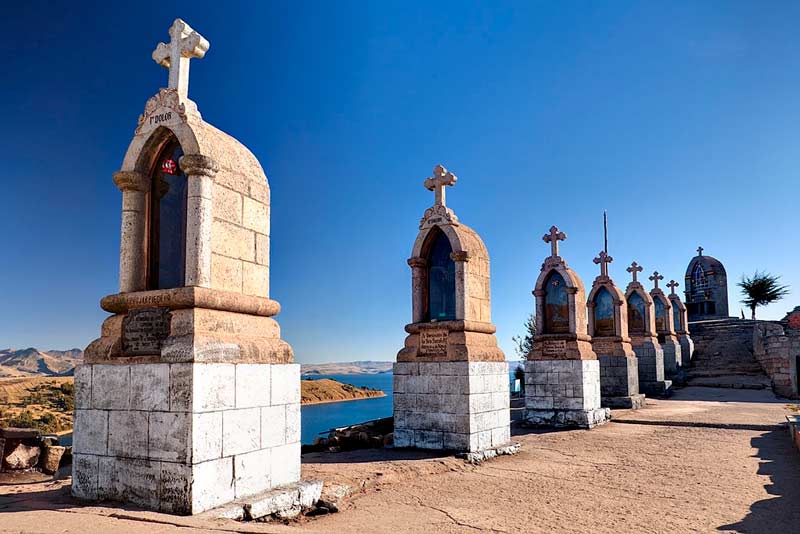
What is asked of the Orisha Oya?
Oya is a deity who is asked to understand what is the reason for our passage in life, to obtain a level of understanding and spiritual evolution. Also, this Orisa is very effective in fighting battles by taking enemies out of the way. An expert in spiritual matters, she can be invoked to gain organization, spiritual evolution, and to fight witchcraft and spells performed using those arts.
Although her charitable capacity is quite broad, this Orisha is asked for her help in matters related to:
- Overcome earthly or spiritual wars.
- Cure diseases, especially when they are caused by witchcraft and curses.
- Develop spiritual and mediumistic abilities.
- Activate courage within the individual and overcome paralyzing fears.
- Improve self-confidence, and raise self-esteem.
- Activate the capacity for action and prepare for the changes that bring both earthly and spiritual evolution.
- Connect appropriately with the destiny and spiritual nature of the individual.
- Wake up lighting.
- Achieve good fortune.
Oya and Shango
Oya may be considered Chango's favorite wife. The story tells that when Shangó decides to retire to Nupe, his motherland, only Oya wanted to accompany him. Along the way, her momentum began to wane, since she, she could not imagine living in a strange land, with other customs and another language. Passing through Ira, her hometown, she gave up her commitment to accompany him. In the same way, she would not return to Oyo, due to the shame caused by having abandoned her husband. In this way, she decided to remain in Ira. When the information about Shangó's suicide became known, she was so shocked that this caused her that she also decided to do the same. Being she deified from that moment, which, she originated that they call the Niger river, Odo Oyá.
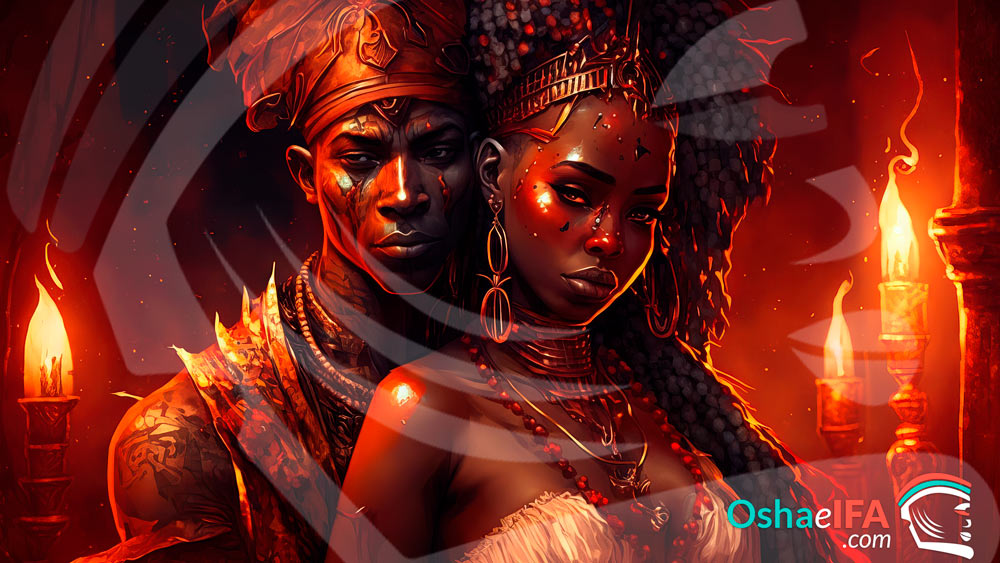
For the Yoruba people, their ancestors who have been recognized as heroines or deified heroes are not identified as dead, they are said to have "disappeared". There is also the belief that before Oyá put an end to his life, he participated in the creation of the Shangó myth from which the expression «Oba Ko So» was born, since he is also credited with creating the rumor that says that: «the king he has not died”, all this with a quite symbolic sense, since Oya's intention was not to deny what happened, rather it was to stimulate the process of transcendence of her husband, promoting his change from this plan to the other, without giving him an opportunity to his spirituality wandering on Earth for no reason.
This shows that the relationship between Shango and Oya is very significant in order to understand the energy that identifies this Orisa. Changó represents courage and Yansa, the ability to change. Together they symbolize the expression of the spiritual evolution of the consciousness of the individual to higher planes, that is, the search for union with the vital energy that allows achieving harmony and transcending after death. This makes the recently deceased man an ancestor worshiped by his society.
They combine the natural strength of each of their essences to restore balance, they work together in a perfect way, so Shango's fire is fed by the winds of Oya. That is why the spirituality of the Yanza is always present in the four elements: fire, earth, water, and air.
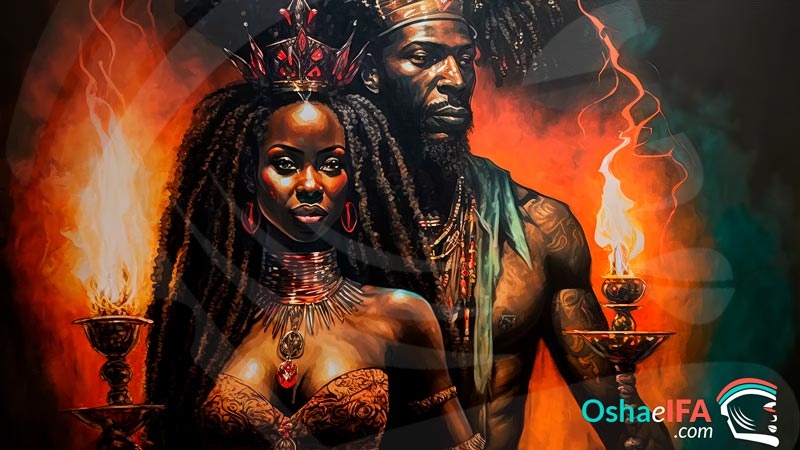
For the Yoruba culture, the male Orishas usually complement their attributes and magical powers with those of their wives. It is believed that Oloddumare created the female divinities to balance the energies and maximize them. And this is where we can understand the reason why, Oya and Shangó are the representation of the perfect marriage, despite the fact that it is often said that Shango's true wife is Oba due to the sacrifice of love made by cutting off his ear for his love. cause, obviously, there is no doubt that Oba was the wife of Changó, being so, obviously she was a true wife, they all were in fact, let us remember that the Yorubas are a polygamous society, in their culture the fact of having several wives was completely natural .
Also, when we talk about Oya in particular, a special phenomenon happens between these two deities. They are a reference to the true meaning of the family, the fundamental basis of society and that is constituted from marriage. This is understood in this way, because Oya transcends and is deified as the woman who accompanied her husband in all her affairs and until the end of her life.
We can observe this thanks to the level that Oya and Shangó manage to reach with their relationship in every way. A story that makes reference to this affirmation narrates that Chango was not satisfied with the power that he had in his town and aspired that they would have more fear of him. So, he summoned the wisest priests of Oyo, and ordered them to prepare spells stronger than thunder for him. The sorcerers did different jobs, but none of them achieved what he wanted. He sent for Eshu, and asked the same thing. After so much insistence Eshu ended up agreeing to his requests and told him to send his wife Oya with a goat for her house, to do what he requested.
Chango complied with what was agreed. Oya delivered the package to Eshu, who told him to come back in 7 days. After the time, she returned, receiving the package that she had to take to the hands of her husband. On the way back, she became very curious and began to examine the package. Unable to resist the desire to know its content, she uncovered it from one side, observing a red powder inside, she touched it with the tips of her fingers and tasted a little, reaching the conclusion that it had no flavor. She closed the package again and continued on her way. When she arrived in front of her Shango she gave him the parcel. He asked her if Eshu had told her what she should do with that powder, but when she tried to speak Oya a flame of fire sprouted from her mouth. Very annoyed, Chango claimed to Oya that he had tasted her powder, trying to raise her hand, but she ran away hiding under some sheep in the field. Chango, unable to find her, launched several thunders to see if he could reach her, but Oya did not suffer any damage, her body was protected by a sheep that did perish with the impact of Shango's anger.
Oya wanted to return to her husband's house, but she was very afraid. She went to the town of Oyo and asked them to pray for her. People did so, finally, he agreed. That night Changó took the package of prepared powders and on a hill that went over the city he blew a little red powder, and from his mouth a great flame came out that set fire to his palace and part of the city. Then he blew into the sky and it turned red. The city was reduced to ashes, and had to be rebuilt.
This was the way in which Shango regained the respect and fear of his people, but it also demonstrates Oya's ability to put herself on a par with her husband, complementing each other to a great extent and showing that she did not need her husband's strength. to dare to take any action, or even demonstrating their ability to do great things. For the Yoruba, thunder is the announcement of lightning, and these are emanated by Oyá who has been announcing the arrival of her husband Changó.
History: Oya I stopped eating mutton

Oyá owned the market. She had always been in love with Shango but he was not paying attention to her. One day, walking in the forest, he saw a beautiful black buffalo, he thought of hunting it with his bow and arrow when he saw that buffalo shed its skin, transforming into Shango. Seeing where he hid the skin, she took it, taking it to the market.
The next day, Shango when looking for her obviously did not find her. Desperate, he arrived at the market asking Oya if he knew about it, who replied that she had it saved and that to give it back to him he would have to live with it. He agreed, only on the condition that he never reveal his secret. It was thus, that they began to live together conceiving the Ibeyis.
Ogún, Shango's enemy, thanks to Yemayá who was Oya's sister, she learned the secret and told it all over the town. Shango, upon finding out, took her skin and transformed, leaving angrily for the forest to look for her, who had opportunely gone to Orunmila by divination, immediately making the eboses with: a ram, a rooster, two pigeons, cocoa butter, brandy, and shell , recommended by Ifa.
After making his ebbo he went to take care of his herd of rams in the forest. Meanwhile, Shango was looking for her in the thick of the forest, meeting by chance with Oggun, with whom he had a strong fight in which he lost a jar that was kept by the Orisha of iron (that is why Oggún's ogue is made of a single jar) . The magic of that disguise made her jars grow, so, without paying attention, she continued on her way in search of Oya..
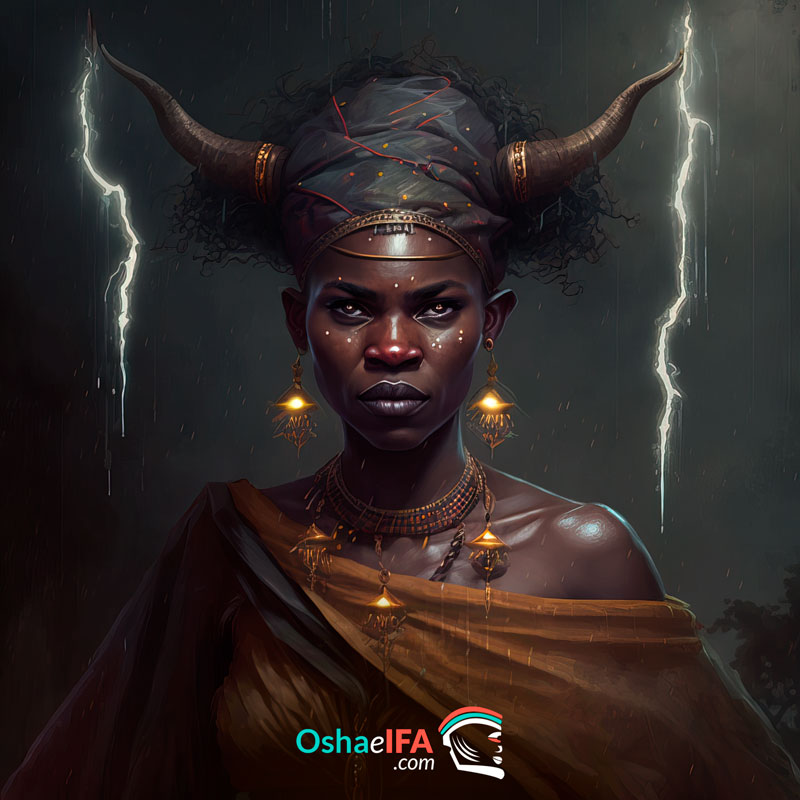
When he found her, in the company of the Ibellis, he went to attack her. Oya, realizing Shango's fury to avoid a tragedy with his children, threw him a ram that he quickly devoured, when he tasted it he liked it, when he saw that, he threw it one after another, which was appeasing the fury of that buffalo . Finally, she offered to give up that food that by then was her favorite, giving it to her husband. In this way, he managed to save himself and his children. Becoming "Yanzán" (the whirlpool), taking the Ibeyis out of the place, taking them to Yemayá to protect them.
This story demonstrates the importance that Oya gives to her work as a mother, capable of sacrificing whatever is necessary in order to effectively protect her children. Although in this sense, that maternal perspective, which is more evident or predominant in other Orishas, may be different when analyzing Oya.
As is evident, Oya was a mother, but her cult affirms that her children mostly did not belong to this world, but to spirits that came from the kingdom of the ancestors. This is based on a story that tells that Yansa, being Oggun's wife, could not get pregnant, so she went to Orumila's house who told her that she should make a sacrifice to prepare a medicine to reverse her infertility. She did it right away. But, in addition to her, he told her that she should be impregnated by a strong and aggressive man like her. After being seduced by Changó, who was a young and handsome king, they manage to have 9 children. That is why she is known as Iya mesa mesa or Iyanzan, which translates as: the mother of nine. However, her first 8 children did not speak, unlike the ninth that, thanks to the eboses recommended by Orunmila, she did manage to do so, but it is estimated that her voice was not human.
What are Oya's children like?
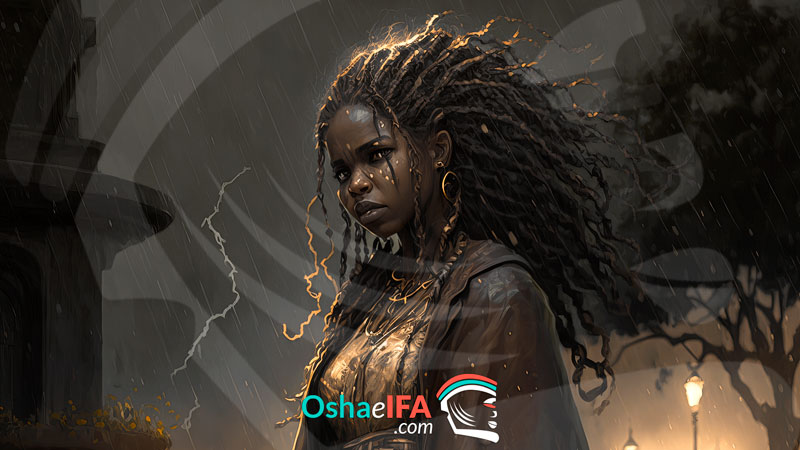
Oya's children often have an indomitable spirit and creative soul, but can sometimes lose all sense of logic when in love. Generous, secure, self-sacrificing, very good friends, faithful, loyal, radical, honest, very maternal or paternal, spiritual, good witches or sorcerers. In other cases, they can become obsessive, jealous, moody, gossipy, pushy, arrogant, conflictive, insecure and do not forgive easily.
Names for Oya's children
- Ayagba Egun: queen of the dead.
- Ayagba Dina: The queen of the candle.
- Loyu leti: Oya's eyes and ears.
- Oya Ladde: the crown of Yansa.
- Dide funke: the staff that lifts Oya.
- Ayagba Iku: the queen of death.
- Saradde Iku: the throne and crown of the dead.
- Ayagba Iku Ladde: the queen of the crown of death.
- Ayagba Oyiyi Oku: the queen of distant spirits.
- Iku loye nike: the shiny manilla of the dead man.
Adimuses, offerings and how to attend to Oya
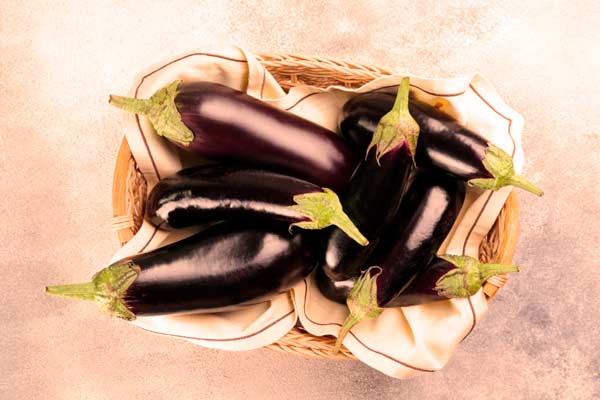
Oya likes white rice with aubergine and caritas bean buns. Among his favorites is the bean cake or razupo. He is offered kola nut, liqueurs, wines, yams crushed with palm oil; chocolate pudding, corn, honey. Beef, which is passed through the pan and honey with cocoa butter is added. Fish with honey and cocoa butter. Locher-colored fruits, mamey, sapote and aubergine. Melon soda glasses with red wine. Bits of glory. Yam with cocoa butter and nutmeg. The boiled beets with honey and red wine. Roast black chickens.
What does Oya eat?
Goats, pigeons, chickens, guinea pigs, and quails are sacrificed to Oya.
9 Oya herbs
Some of its plants are: croto, yantén, custard apple, horse buster, cabo de hacha, caimito, caimitillo, bomba fruit (male), guara, pomegranate, yaya, ax bankruptcy stick and leaves, cordoban, custard apple, avocado, caleta grape, acacia, framboyan, all crotos, mondonguera mallow, gummy grape, thousand flowers.
Orisha Oya in the Catholic Religion (Syncretism)
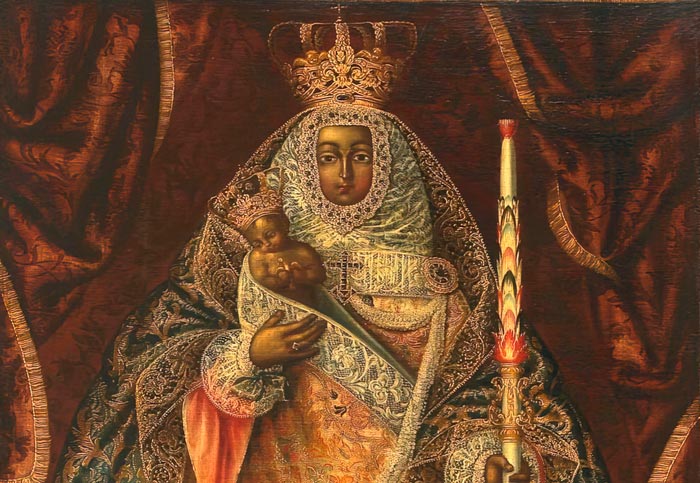
Oya's syncretism in the Catholic religion is carried out with the Virgen de la Candelaria o Our Lady of Candelaria. This virgin, who is classified as "a black virgin", whose cult is of Spanish origin, gets her name derived from the candlestick or candle in reference to the light that guides towards "the right path or the correct path", to understanding and faith.
From that reference we find a very interesting similarity that, without a doubt, was one of the reasons why the Yoruba syncretized both spiritualities. The Yoruba belief in Nigeria states that Yansa's role is to confirm whether the recently deceased learned their lesson during this lifetime and transcended, giving rise to the process of transformation or "enlightenment" that occurs after death. This is a state that the Yoruba call it «ehin iwá » which means: behind life or after life. In addition, the candle is in fact also an element related to this Orisha.
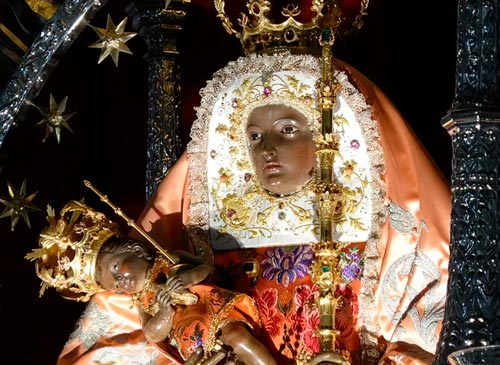
On the other hand, it is believed that the cult of the Virgen de la Candelaria arises as a result of another syncretism coming from the culture of the ancient Canaries or Guanches worshipers of pagan Gods, whose cult was brought to the church in representation of this virgin, taking thus their feast of February 2 to celebrate as they used to do, to give thanks for the beginning of the year and for the harvesting of the harvest, just as the Yoruba did in Cuba.
Prayers, Prayers and Oriki to Oya
These are some of the prayers or prayers that are used within Santeria to praise this orisha:
Oya (Oriki) Prayer
(I pray to Oya and praise the spirit of the wind)
Ajalaiye, ajal òrun, fun my goe. Yansan was going.
The winds of Earth and Heaven bring me good fortune. I praise the Mother of the nine main Ancestors.
Ajalaiye, ajal òrun, fun my alafia. I was going Oalready.
The winds of Earth and Heaven bring me good health. I praise Oya.
Ajalaiye, ajal òrun winiwini. Mbe mbe ma Yansan. TOse.
The winds from Earth and Heaven are wonderful. There may always be the Mother of the nine main Ancestors. Asé.
Oya's Prayer for Love
I praise the full spirit of the wind, strolling with full confidence and importance. She takes a basket of cola nuts to put before her husband.
Oya, deep in thought, full spirit of the Wind, come and receive your offerings without offense.
Yansa owner of the place of worship, maybe those who have prepared good food start serving it, Yansa provokes the leaves to tremble!
Oya, strong wind that gave birth to fire while crossing the mountain. Spirit of the wind, please don't knock down the tree in my backyard.
Spirit of the wind, we have seen the fire that covers his body like a cloth. If you look for the spirit of the wind you will find Oyá.
You may find her at the kola nut stand, where Yansa enjoys tossing small pieces into her mouth.
You may find Yansa at the carpenter's stall, where she likes to rub her body in her red energy.
You may find the Yansan at the drum stand, where she moves her body in a frenzied dance.
Mother who uses fire to cover her body, similar to a cloth. Powerful wind blowing under the trees in the forest.
Spirit of the Wind, selfless wife bring the love of my life to me. Don't let me find myself alone today, tomorrow, or ever. Asé.
To health
yansa I was going to table Oyes, Òrun afefe Iku lele bioke, ayaba gbogbo le'ya obinrin,
Yansa, mother of Oyo, the wind of Heaven lowers the ancestors. Queen of all women.
Ogo my anus gbogbo gún, Òlaughsto my abaya Oya ewa O'yansa. TOse.
Always heal me with your powerful medicine, the Queen is my guardian spirit. Spirit of the Wind and mother of the nine main ancestors. Asé.
I sing to Oya
Akuón: ayilodaoyaokuo towuomole, keyo ayaba
Chorus: ayilodayaokuo towuomole, keyo ayaba
Akuón: ekifanla obini oyeo towuomole, keyo ayaba
Chorus: ayilodaoyaokuo towuomole, keyo ayaba
Akuón: oyade mariwuo omesa parrot yokoro
Chorus: oyade mariwuo omesa loro yokoro
Akuón: oyade mariwuo omesa parrot yokoro
Chorus: oyade mariwuo omesa loro yokoro
Akuón: ekifanla obini oyeo towuomole, keyo ayaba
Chorus: ayilodayaokuo towuomole, keyo ayaba
Akuón: yilodaoya okuo towuomole, keeyo ayba
Chorus: yilodaya okuo towuomole, keyo ayaba
WORKS WITH OYA
Work (Ebbo) with Oya for Love
He grabs a purple star apple and stalls. It is filled with: corojo oil, sugar, cognac, calm balm, a wick is placed at the foot of Oya with the name of the one who wants to attract and it is lit for 9 days, asking the Orisa to come the loved one.
For the enemies
An empty sardine can is found, eating oil, guinea pepper, black pepper, earth from a pit with the enemy's name, a paper with his name, the trail and 9 pins are placed on it. Oya is given knowledge and is lit in the trash for 9 days. Then it is taken to the cemetery and thrown into a grave.
For better health
9 peeled and cooked beets are placed. They are put on top of Oya on a plate. Red wine is sprinkled on it, and syrup. It is left there for 9 days asking for health and then it is left at the foot of a ceiba tree.
Oya phrases
Oya says: "The war with the living is bad, the war with me and my dead is much worse."
"There is nothing that the breath of the wind cannot change."
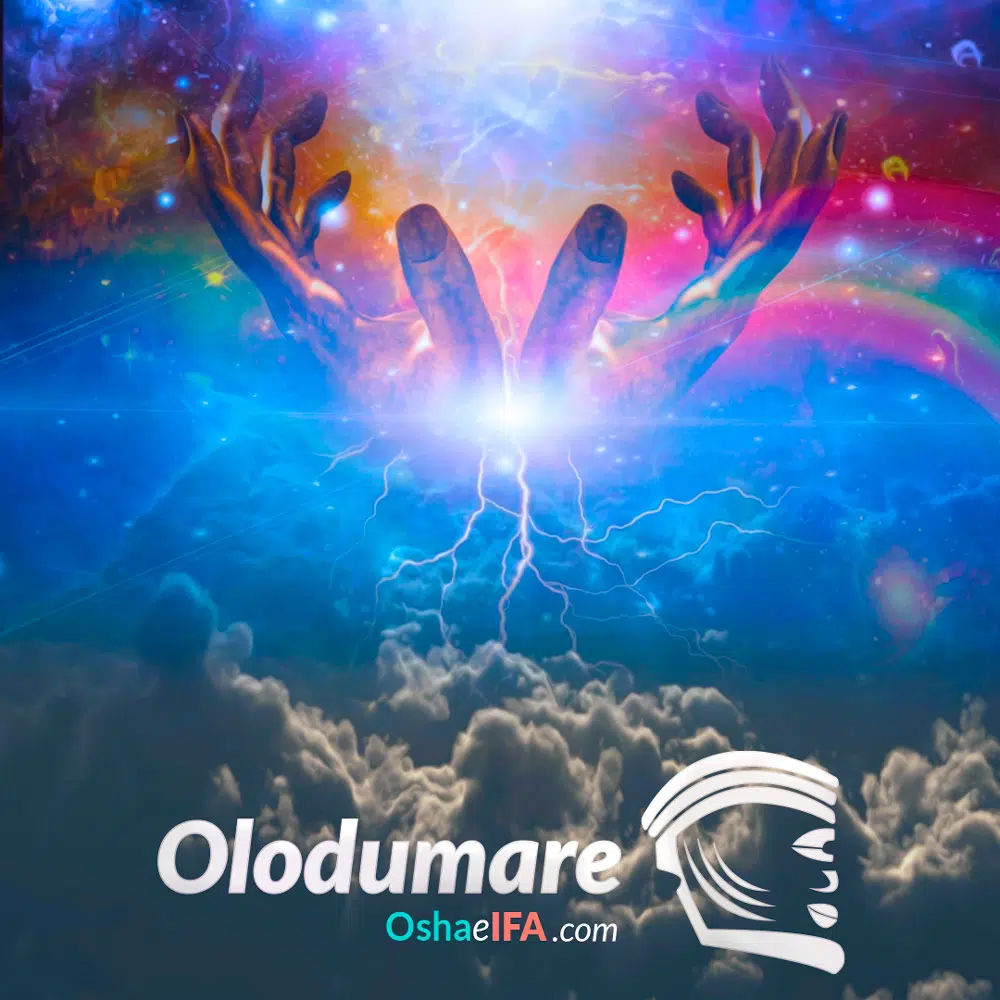
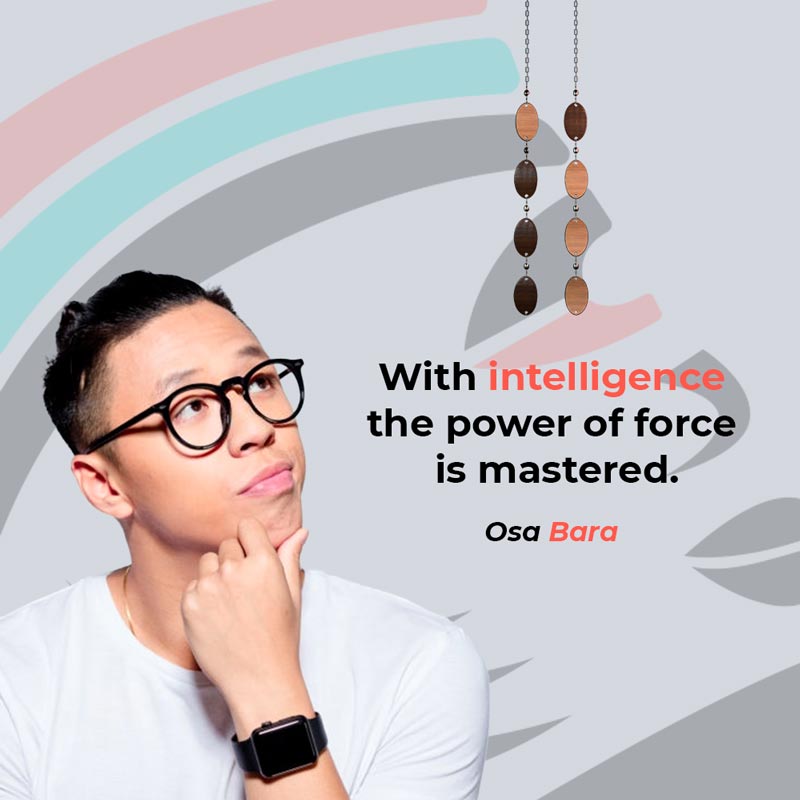

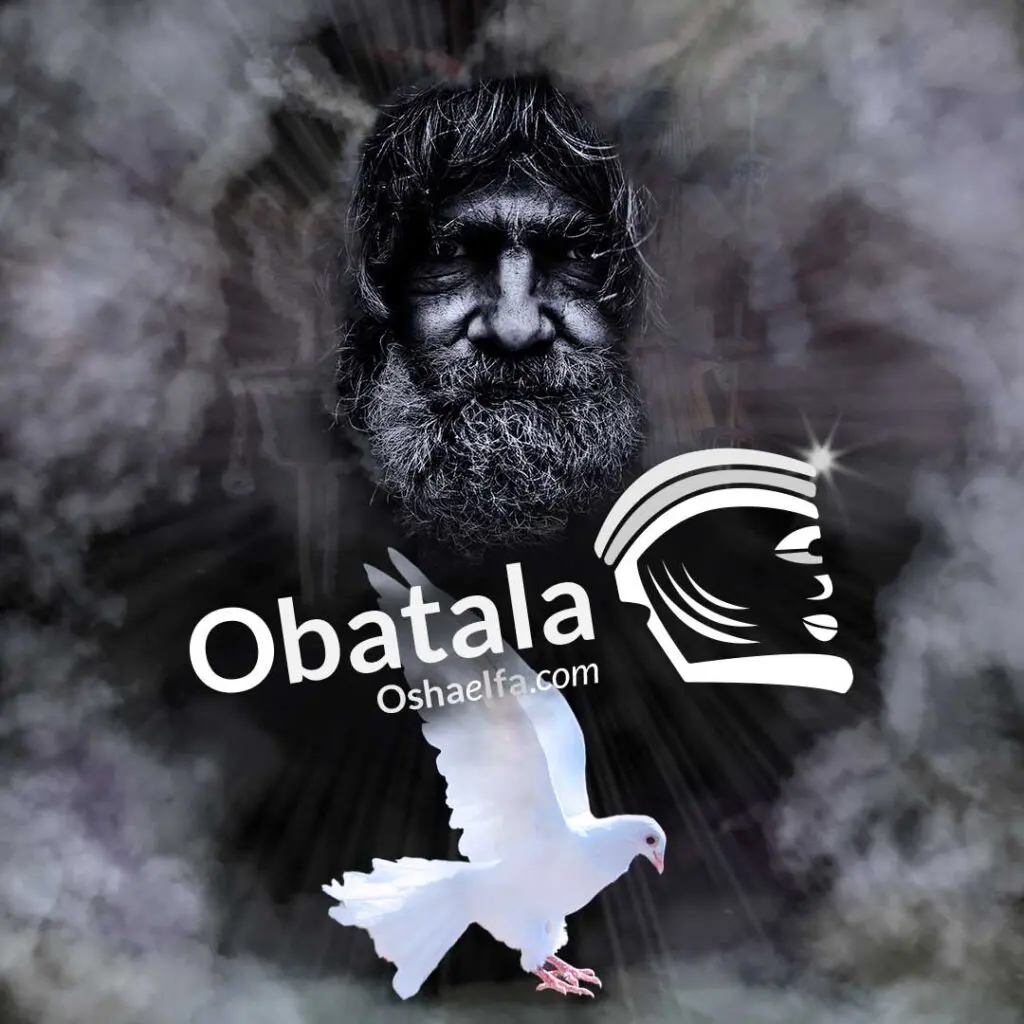
Very good tips and stories. On a website. Thank you.
It has been very revealing for me as it has allowed me to get to know Oya more and better. Thank you so much
Today I was blessed with oyà as my guardian angel. Blessings to all d oyà's children